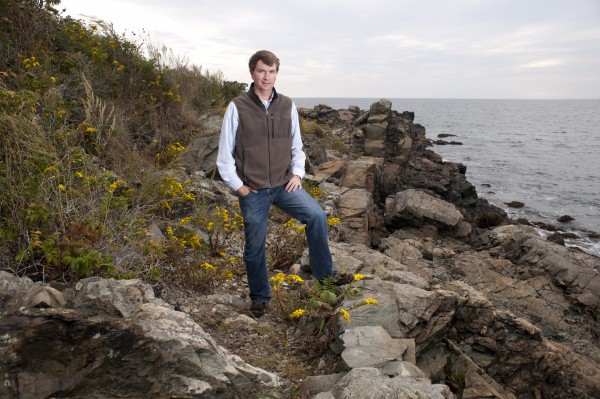Scientists study seawalls on the seashore

Oyster reefs and sandy beaches have historically bordered many picturesque coastlines. But in an effort to prevent erosion, coastal developers are increasingly replacing these living shorelines with rocks and seawalls.
The growing trend is problematic according to Steven Scyphers, a postdoctoral researcher in associate professor Jonathan Grabowski’s lab at Northeastern University’s Marine Science Center. “While coastal developers may have good intentions for land protection,” he explained, “seawalls can change the entire wave environment of a bay and have negative effects on the nearby coastal habitats.”
Scyphers was recently awarded a three-year, $500,000 Science, Engineering and Education for Sustainability Fellowship from the National Science Foundation to explore the social, ecological and engineering factors that contribute to coastal resilience. Together with his fellowship mentors, Grabowski and Mike Beck, lead scientist on the Nature Conservancy’s Global Marine Team, Scyphers will explore coastal resilience using Alabama’s Mobile Bay and Rhode Island’s Narragansett Bay as model systems.
In the first phase of the study, Scyphers will evaluate how human contact has changed the shoreline over time and quantify how that change has affected the production level of coastal fisheries.
Subsequently, Scyphers will collaborate with a coastal engineer in Mobile Bay to test the ecological and engineering performance of some of the newly developed “living shoreline” approaches. For example, they will examine whether man-made oyster reefs or planted vegetation are capable of protecting upland property.
Investigating the social, cultural and political factors that influence the sustainability of shoreline ecosystems is yet a third component of the research project. “Failing to include human considerations will limit the success of any conservation initiative,” said Scyphers.
Grabowski, whose work focuses on the ecological function and economic value of marine habitats, praised Scypher’s research, noting that he was “enthused to see someone who was also blending natural and social sciences through applying survey techniques to assess the human perception of living shoreline values.”
Scyphers speculated about the potential research outcomes. “Maybe we will reveal that putting oysters in a metal cage is the absolute best way to protect a shoreline, and that this method provides good habitat for fish,” he said. “But if 99.9 percent of the coastal residents think it’s the ugliest thing they’ve ever seen, it’s never going to be implemented in a free market.”
The data will add to an ongoing Nature Conservancy project in which researchers are developing an online support tool that helps stakeholders decide which shorelines to restore and which approach to take. Throughout the entire three-year fellowship, Scyphers and his team of mentors and collaborators will also work with the Marine Science Center’s education and outreach programs to introduce the next generation of scientists and the public at large to current challenges and research on coastal sustainability.





